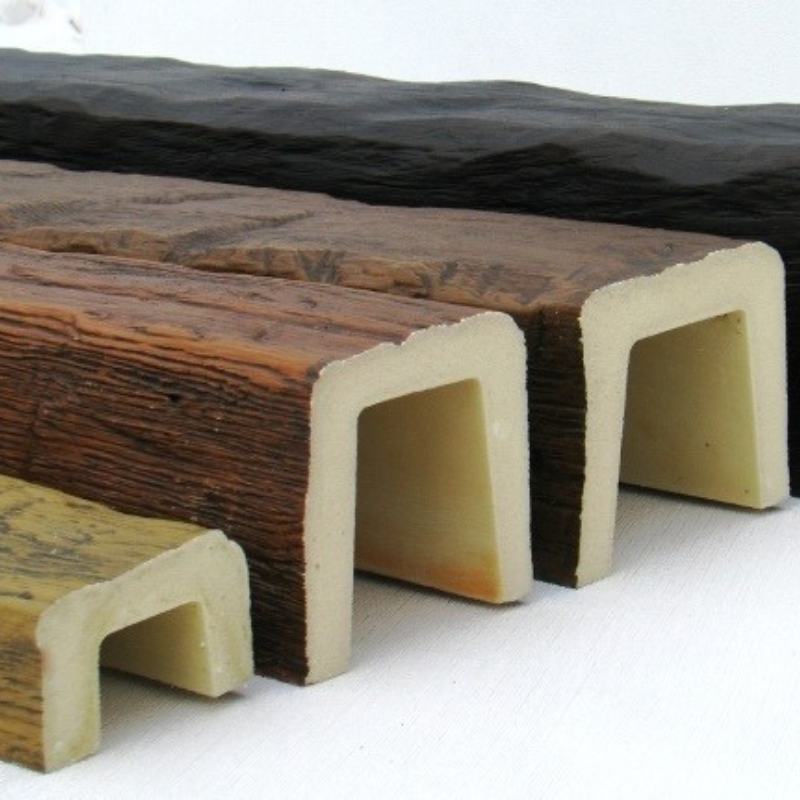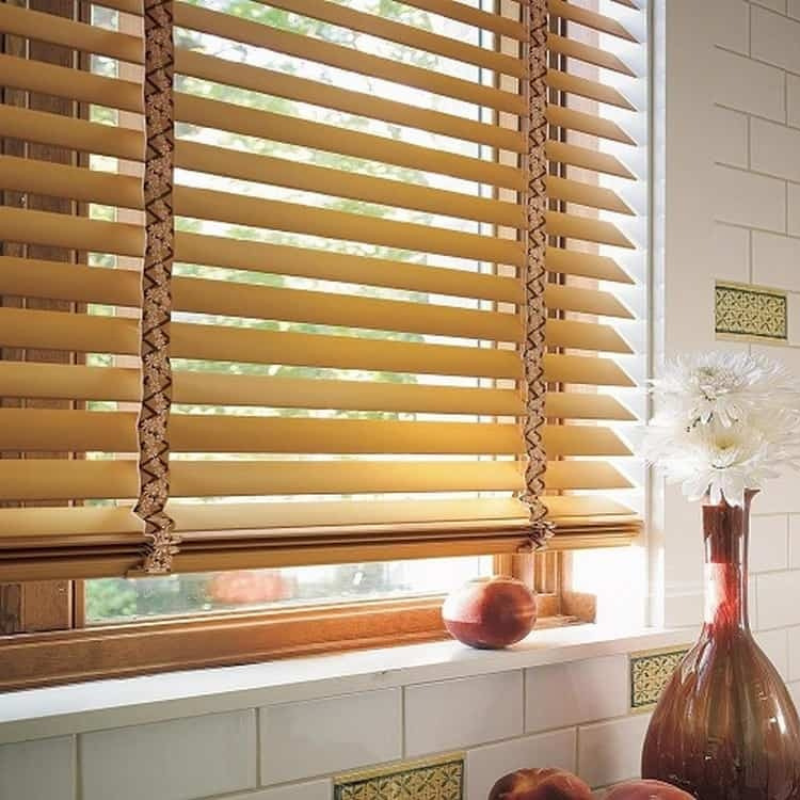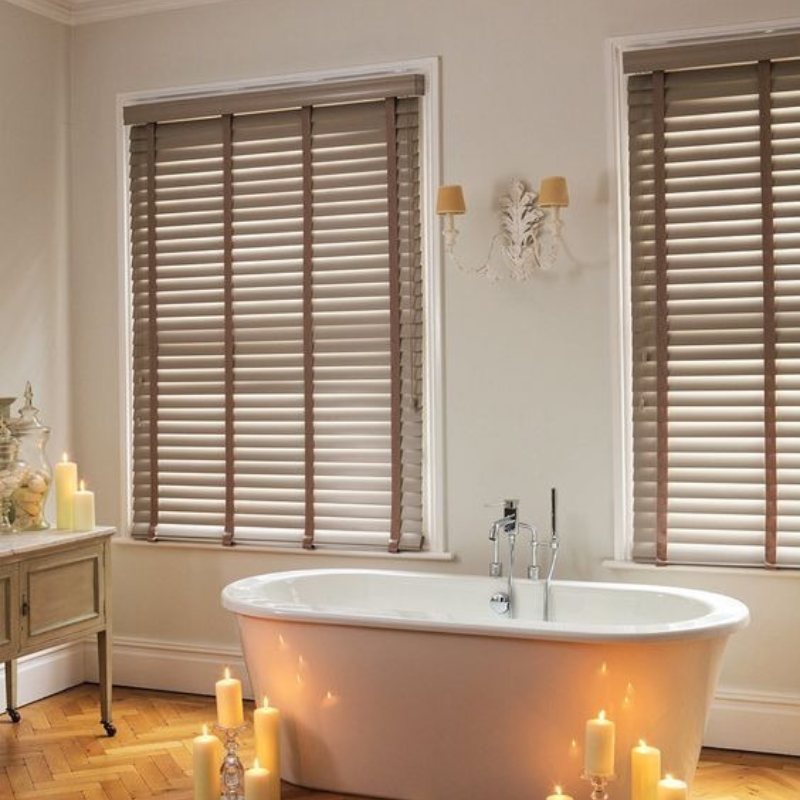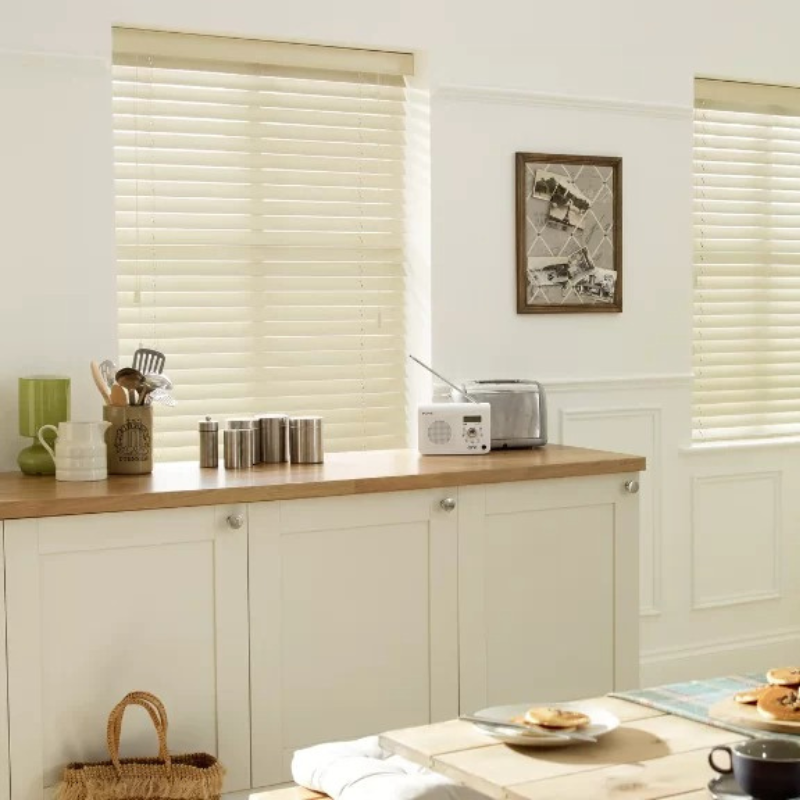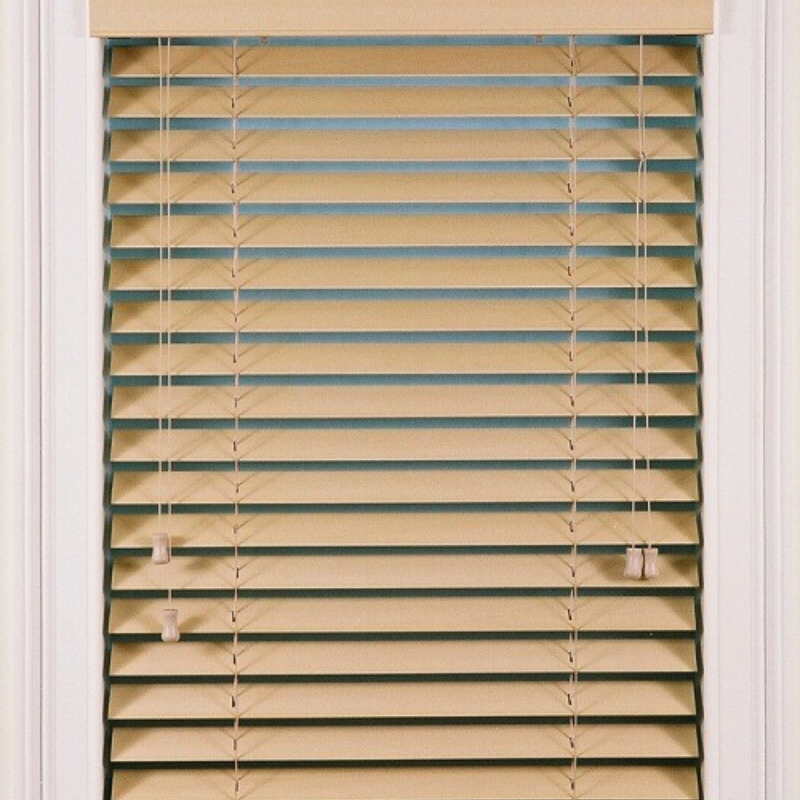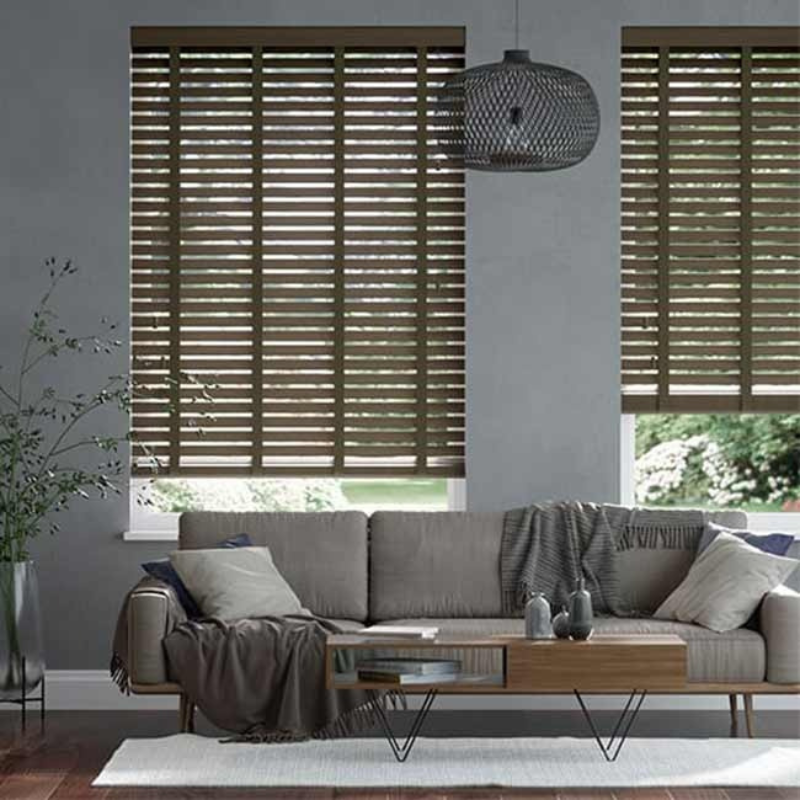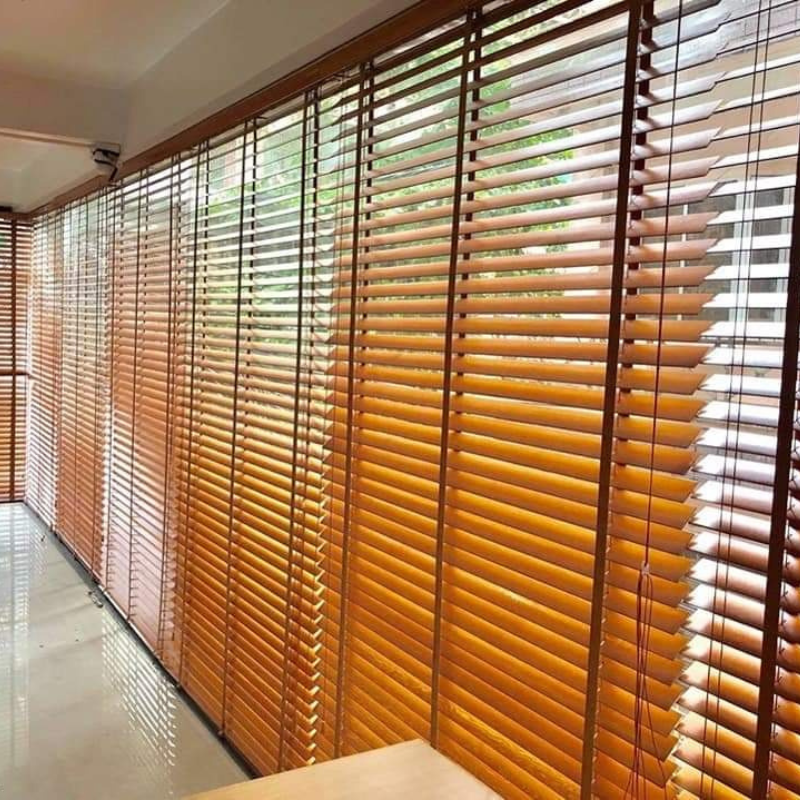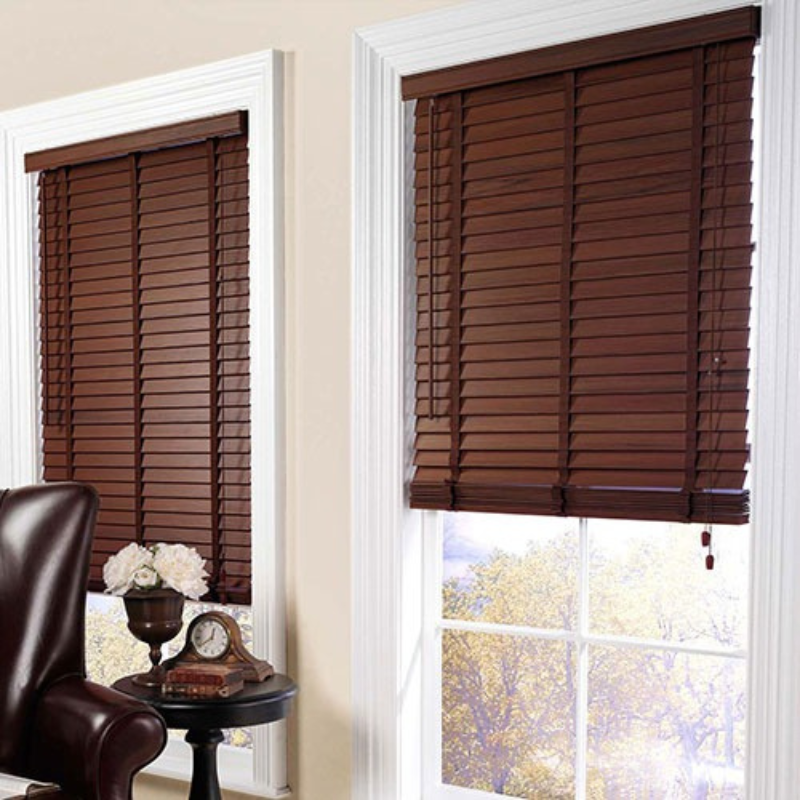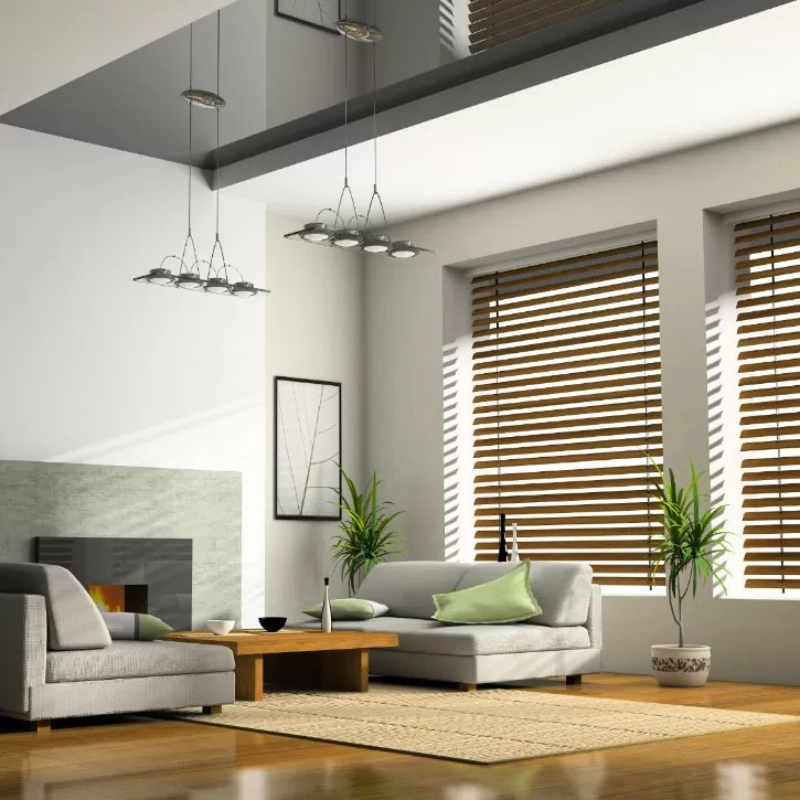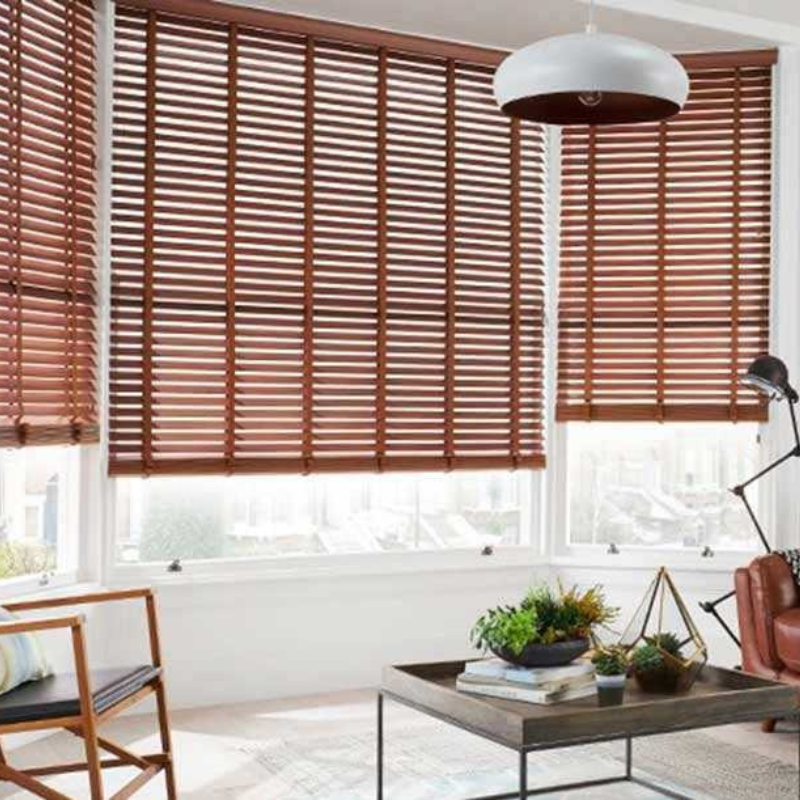In the world of interior decoration, real wood blinds and faux wood blinds are both popular choices, offering natural beauty and elegance to living spaces. However, each type has its own unique characteristics, advantages, and disadvantages. By comparing real wood blinds and faux wood blinds, you can choose the type that best suits your space, preferences, needs, and budget.
1. Real wood blinds
1.1. Material
Real wood blinds are crafted entirely from natural woods such as Russian Oak, Snow Pine, Cedar, Red Sandalwood, and Basswood. They undergo high-tech processing methods like heat pressing, oil soaking, and kiln drying to prevent mold, termites, and warping, thereby enhancing the durability of the wooden slats.
The surface of wooden blinds is coated with a nano paint layer, providing gloss, scratch resistance, water resistance, and UV protection. This coating also helps maintain the color of the blinds over time. Each blind panel boasts unique natural wood grains, adding warmth and elegance to the space.
1.2. Advantages
Natural wood is a recyclable and biodegradable material, contributing to environmental protection. The natural wood grain and rich colors bring an elegant and cozy beauty to the room. With good durability, real wooden blinds can maintain their beauty and longevity over time if properly maintained.
Wooden blinds are not suitable for all spaces and need to be designed from the beginning to harmonize with the overall room decor. They work well with wooden furniture, especially when the ceiling and floor are also made of wood. It is advisable to limit the use of wooden blinds in high humidity areas or places frequently exposed to rain to protect their durability. Wooden blinds reflect sophistication and a high-end lifestyle, highlighting the homeowner's taste and class.
1.3. Disadvantages
Real wooden blinds often have a higher initial investment cost compared to other types of blinds due to the material and complex manufacturing process. To maintain their durability and beauty, real wooden blinds require regular maintenance, including cleaning and avoiding high humidity. Natural wood can warp and crack when exposed to high humidity or direct sunlight for extended periods.
2. Faux Wood Blinds
2.1. Material
Faux wood blinds are made from synthetic materials such as PVC (Polyvinyl Chloride) or PS (Polystyrene), ensuring sturdiness and durability. The surface of the blinds is coated to create an appearance similar to real wood.
Faux wood blinds have a similarity of up to 98% compared to natural wood blinds and also possess equivalent sturdiness. The surface of the slats is coated with a layer of polymer, which adds gloss and protects the paint, increasing the durability and lifespan of the blinds. The design of the faux wood blinds mimics natural wood grain, giving them an appearance similar to real wood.
2.2. Advantages
Compared to real wood blinds, faux wood blinds are more cost-effective, making them suitable for a wider range of customers and budgets. With high moisture resistance, faux wood blinds are an ideal choice for humid environments such as bathrooms and kitchens. Faux wood blinds are easy to clean and maintain without requiring special care, saving time and effort for users.
Synthetic materials tend to become flexible when exposed to high temperatures, so blinds should not be used in areas with temperatures above 55°C for extended periods. Faux wood blinds have better moisture resistance, making them suitable for high-humidity spaces like kitchens and bathrooms. You can confidently use faux wood blinds outdoors without worrying about affecting the product's lifespan.
2.3. Disadvantages
Although designed to mimic real wood, faux wood blinds still struggle to achieve the same level of luxury and uniqueness as natural wood. Faux wood blinds may not be as durable as real wood blinds in harsh environmental conditions and can deteriorate more quickly over time.
3. When to choose real wood blinds
Wooden blinds are suitable for various spaces and harmonize with two main interior design styles: modern and neo-classical. Choosing wooden blinds will add a standout feature, reflecting the homeowner's aesthetic taste. With their robust appearance, wooden blinds create a strong and sophisticated ambiance in the room while also providing a warm and inviting feel.
This nature-inspired product is suitable for spaces such as family apartments, offices, hotels, and homestays. The wood grain patterns and muted tones of wooden blinds, combined with intricately carved interiors, create a nostalgic and warm atmosphere for settings like classic coffee shops, traditional restaurants, and historic villas.
4. When should you choose faux wood blinds?
Faux wood blinds have several advantages over real wood blinds, making them a better choice for many households. These blinds do not rot, get damaged by insects, or get ruined by water, and they do not warp or crack over time like real wood. This makes faux wood blinds an ideal material for high-traffic areas or places with harsh weather conditions.
Faux wood blinds are also moisture-resistant, making them suitable for high-humidity areas such as dining rooms, bathrooms, and kitchens. They can withstand direct sunlight, are easy to clean and maintain, and have an attractive appearance at an affordable price. This makes them an appealing choice for those who want to save money while still having beautiful and functional blinds.
Choosing between real wood blinds and faux wood blinds depends on your specific needs and conditions. If you prioritize aesthetics and luxury and are willing to invest time and money in maintenance, real wood blinds are the ideal choice. On the other hand, if you need an economical solution that is easy to maintain and suitable for humid environments, faux wood blinds are more suitable. Regardless of your choice, both options can provide beauty and convenience to your living space.
In summary, faux wood blinds are an excellent choice for homeowners who want the beauty and features of real wood blinds but with a more budget-friendly option.


